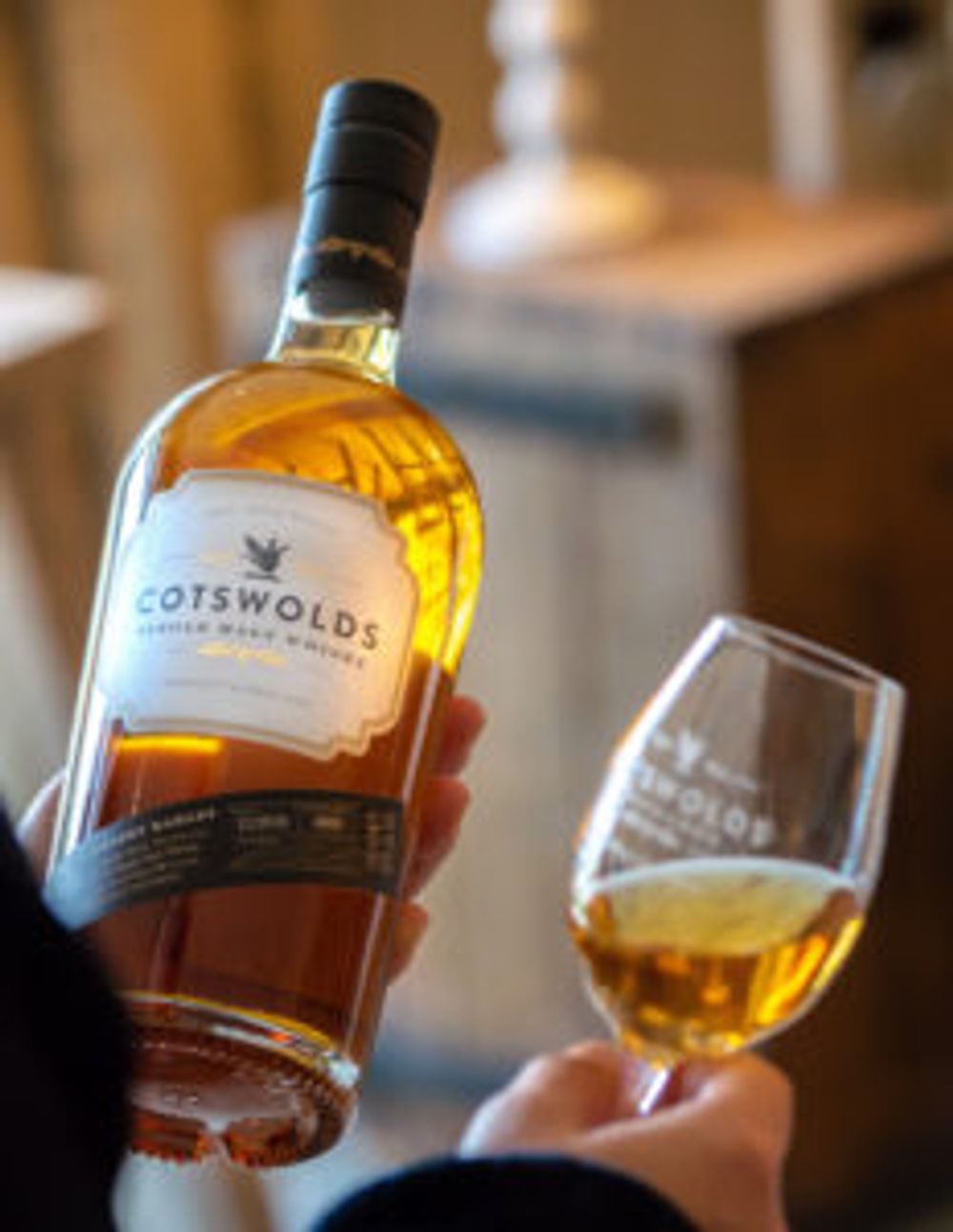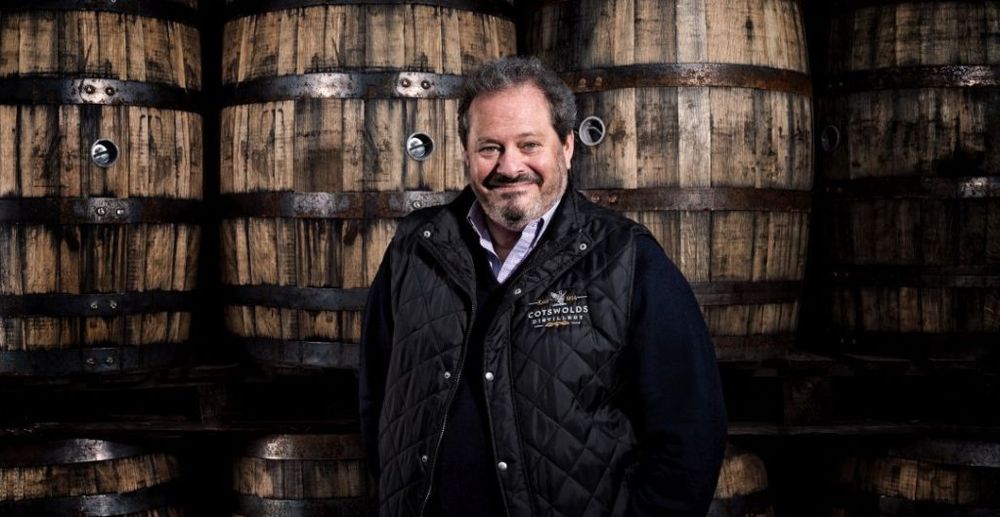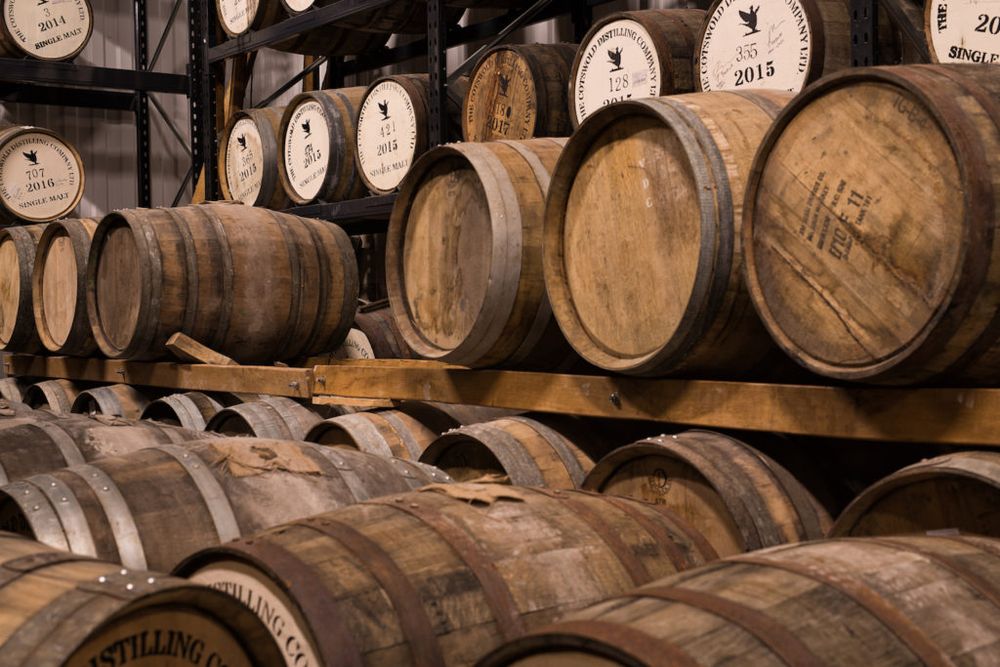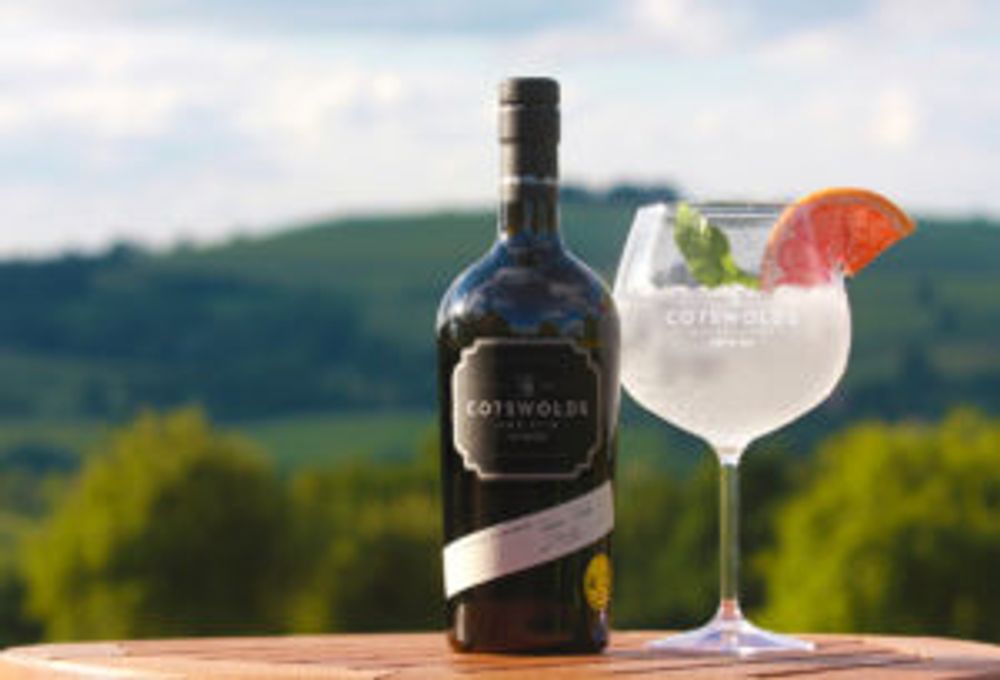“It’s kind of a testament to our way of looking at whisky,” Daniel Szor says about Cotswolds Distillery, “If you have good ingredients, sound process, really hard-working folks and good protocols, you end up making good whisky.”
Of all the premium spirits success stories over the last decade, none is more uplifting than that of the Cotswolds Distillery. Situated on the Warwickshire/Oxfordshire border outside the village of Stourton near the market town of Shipston-on-Stour, this whisky and gin producer has received widespread acclaim culminating in gold medals at the IWSC awards in July for two of its whiskies. Throw in the 15,000 visitors per annum who go on a tour of the distillery at £15 per head, and another 15,000 who drop in on the successful in-house cafe and shop, and you have a compelling business model.
For Daniel Szor, the American who dreamt up the idea of a whisky distillery in the Cotswold Hills, the recognition was a triumph.

“It was a day of particular pride to win those golds, as five years ago, we didn’t have a distillery,” Szor, its chairman and CEO, told The Buyer. “The crew, who showed up for work on July 1 2014, hadn’t made whisky before except two Scottish guys, who helped us out. But they had 100 years worth of experience between them. In five years, we’ve gone from that to gold in a spirit category that typically doesn’t reward you with much until after 10 to 20 years.”
Nobody embodies the ‘can-do’ attitude more than Szor, a native New Yorker.
“I spent 30 years doing boring hedge fund currency stuff, and I was just a whisky lover who also loved going round Scotland and touring distilleries,” he confessed. “I thought that there would be no reason why, what the Scots offer as a visitor experience, you couldn’t do that in the Cotswolds. We have the visitors – 30,000 a year – we have a beautiful part of the country, and we can express that through a whisky.”

Daniel Szor, CEO of Cotswolds Distillery
“A lot of barley is grown in the Cotswolds – our barley comes from Combe (Blenheim Estate). I like the fact I know where it comes from and who grows it. A high-end distillery in Scotland will give you the name of the maltster but you won’t know where the actual barley was grown – it could be Scotland, England, Europe or anywhere. So just getting back to that more local aspect of it felt right. The way it’s being malted – floor malting – is also a much higher quality method of malting than the industrial drones that will do 400 tons at a time. We’re very happy to have something local to us and to know it’s top quality. We’ve tried a few other places, such as Highgrove, whose organic heirloom barley gives a very different taste of spirit.”
A well-made spirit and great casks
Szor is engagingly frank in trying to explain the success of his whisky.
“It’s kind of a testament to our way of looking at whisky,” he said. “If you have good ingredients, sound process, really hard-working folks and good protocols, you end up making good whisky. The reason we can create a whisky that is as good as it is in three years, is because we make exceptionally good new-made spirit. The spirit right out the stills is of great quality: you can taste the fruitiness, you can taste the sweetness. It has very few off-notes. One of the reasons for that is our cuts – the way we do our distilling cuts. We cut at a very high point, and we have a very narrow hard cut. It’s a very pure, almost an eau-de-vie that you’re drinking, which requires minimum maturation.”

“The second part of the secret is to have excellent quality casks, because so much of the taste of the whisky is what it’s been aged in. So we’re using very good quality wood, in particular one cask which was invented by one of the Scots, Jim Swann, who helped set up the distillery. It is a recharred red wine cask – American oak with Iberian wine typically. American oak is much kinder to whisky than European oak, being less tannic and having more spice. The genius of Swann was to take an ex-red wine cask made of American oak, strip it, toast it and char it; in effect combining the best that both a new Bourbon cask and a wine cask, with six to eight litres of wine still in the wood, have to give. So, really it’s a combination of well-made spirit and great casks that give us a whisky that in three years can give us a gold medal.”
Driving gin lovers up the quality ladder
The Cotswolds Distillery’s gin is notable for being especially flavoursome, as well as going cloudy when mixed with tonic. “It’s essentially that our first distillers were a little bit crazy and came up with a recipe that involved ten times the botanical load than most gins would use,” Szor explained. “It gave a huge flavour – but it had one problem, which was it louched. The oils emolsified and went cloudy when you added water. To most, that would have been an issue, but the whisky geeks always talk that it’s really all about the oils because all the inner spirit is water, alcohol and oil; and the flavour is all in the essential oils that come out during distillation. And that’s become a key USP of the gin – we’ve got a gin that is so packed with flavour this is how it looks.”

“It’s clear when it comes out the bottle but when you add tonic or water, it’s a little bit like a pastiche colour. We think during this whole gin craze, it’s going to drive people up the ladder in terms of the quality they’re looking for and their level of discernment. They will be looking for flavour – not simplistic flavours like rhubarb gin but actual real complex ones.’
As many as nine botanicals go into the Cotswolds Distillery’s gin, notably the holy trinity of juniper, coriander and angelica, as well as a lot of citrus.
“The difference with us is that we peel all our fruit by hand with a paring knife, and go through about 500 grapefruits and 800 limes every week,” Szor revealed. “Those fresh peels have a lot more oil – hence the louche. One of our local botanicals is lavender, which is grown on Snowshill above Broadway. It’s nice to have a bit of the Cotswolds literally in the gin, which we originally thought could go in the shop and be sold at weekend fairs, but it just took off. We got a Fortnums listing a fortnight after our first run of gin. Then it kept on going and the gin almost became a defining element in our growth.”

Gin experiences are an important part of the visitor experience
Controlling growth and expanding the range
High demand for the gin led to a new still and a bigger still that led to a new bottling hall, which in turn led to the construction of a visitor centre.
“We’ve had a lot of growth in a short period of time,” Szor said. “We’ve been on a-building-a-year for the past three years, but have no plans to expand physically. We now have the capacity to make in excess of 100,000 nine-litre cases: well over a million bottles per year, a third being whisky and two-thirds gin. The question is will what’s happened to gin in the UK in the last 3-4 years happen elsewhere, notably in the US? There the super and ultra-premium categories are seeing the beginnings of really strong growth, so there are big opportunities there.”
The US, one of 35 countries that Szor exports to, is his biggest overseas market. Around a quarter of production is exported.
Always thinking ahead, Szor is planning a range of half a dozen different whiskies.
“Coming out in October will be our newest SKU: a peated whisky cask,” he declared. “We’re known for an unpeated spirit but we’ve been doing a few experiments just for the fun of it to see what happens when you age an unpeated spirit in a peaty Islay cask. The results are wonderful because just a little bit of peat leeches out from the wood into the whisky. We enjoyed it so much we decided to turn it into a full core product, albeit in extremely limited quantities. It’ll be 62% ABV and will sell at £65 in our shop, online and in a few selected retailers. Next to come out will be our sherry cask on April 1. In October 2020 there’ll be a whisky matured in 100% Bourbon cask.”

The two IWSC gold medal whiskies are the Flagship and Founders Choice. The former is a blend of two casks – red wine (70%) and Bourbon (30%). An explosion of flavours and concentration greets the taster, with notes of caramel, tobacco, chocolate and stewed apple to the fore. The Founders Choice, which came out only last November, is 100% matured in red wine casks. Much darker than the Flagship, it is also richer and more fiery (possessing more spirit at 61% ABV).
Completing the range in late 2020 will be Flagship 2. “That will come back to a more traditional malt taste,” Szor mused. “It’ll be more on the grain than on the fruit, whereas Flagship 1 is a complete fruit bomb. When those six whiskies are out by the end of 2020, the plan every six months thereafter is to do one, perhaps two, limited editions of various casks from Port, Madeira, Calvados, Sauternes, Vermouth and Tokaj. Around 3,000 bottles per annum just to keep things interesting, although the others will be the core SKUs.”
Where can I buy Cotswold Distillery spirits?
Direct on-trade customers (with on-trade rate) but minimum order quantities. Principal route to market is via distributors such as: Matthew Clark, Bibendum, LWC Drinks, Enotria&Coe, Speciality Drinks, Venus, Amathus, Hedonism, Nectar, SH Jones, St Austell, Tolchards, Butcombe, Booker and Arkells.
Retailers include Waitrose, Majestic, Harrods, Fortnums, Selfridges, Harvey Nichols, World Duty Free in major UK airports
































